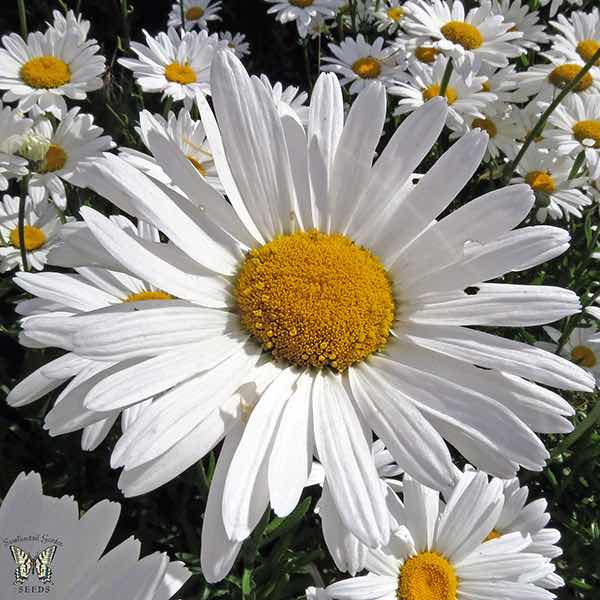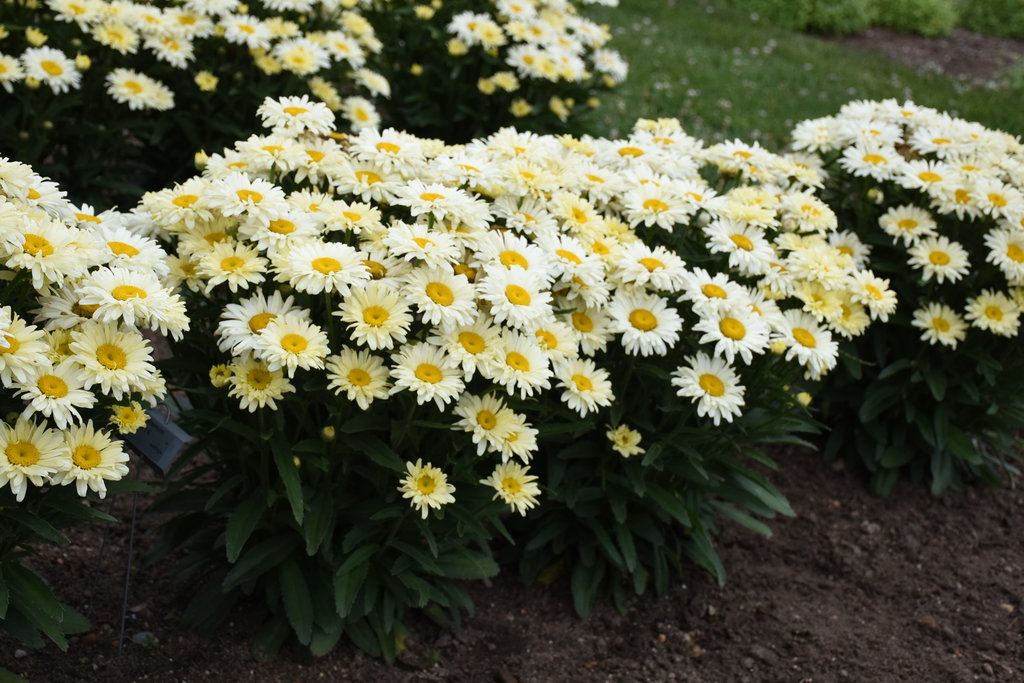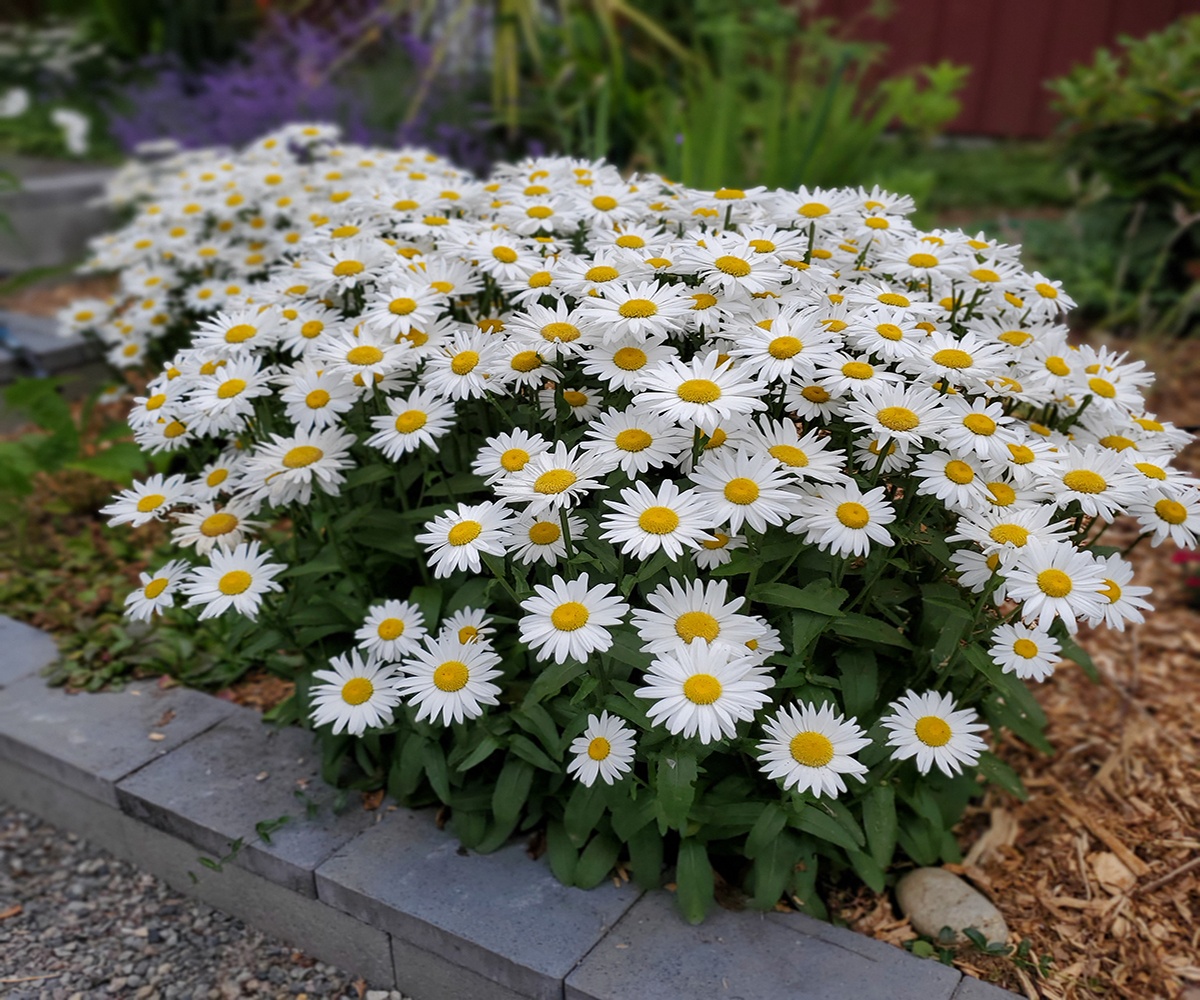Understanding the Basics: Shasta Daisy Characteristics
Shasta daisies (Leucanthemum x superbum) are a popular choice for gardeners and landscapers alike, thanks to their attractive, showy white flowers and ability to thrive in various conditions. These daisies, originating from the crossing of several European daisy species, have become a beloved addition to gardens around the world. Their cheerful, sunshine-like flowers, often featuring yellow centers, can brighten up any outdoor space.
Shasta Daisy: Annual or Perennial? Unraveling the Mystery
Shasta daisies are often a subject of confusion when it comes to their growth habit, as they can behave as both annuals and perennials depending on the region and conditions. To better understand this phenomenon, it’s essential to first clarify the difference between annual and perennial plants.
Annual plants complete their entire life cycle within one growing season, from germination to seed production. These plants typically die after producing seeds, and gardeners must replant them the following year. On the other hand, perennial plants return year after year, persisting through multiple growing seasons. They may go dormant during unfavorable conditions but will regrow when conditions improve.
Shasta daisies, when grown in favorable conditions, tend to exhibit perennial behavior. However, in regions with harsh winters or adverse soil conditions, they may behave as annuals, completing their life cycle within one season. By understanding these growth habits, gardeners can make informed decisions about how to cultivate Shasta daisies in their gardens.
Shasta Daisy as an Annual Plant: A Seasonal Delight
Shasta daisies can be grown as annuals, making the most of their beauty within a single growing season. When treated as annuals, these plants focus their energy on producing abundant flowers rather than establishing extensive root systems.
To grow Shasta daisies as annuals, start by purchasing young plants from a local nursery or garden center. Choose healthy plants with vibrant green foliage and buds ready to bloom. Alternatively, you can grow Shasta daisies from seeds, sowing them indoors 4-6 weeks before the last expected frost or directly in the garden after the danger of frost has passed.
When growing Shasta daisies as annuals, ensure they receive at least 6 hours of sunlight daily and are planted in well-draining soil. Water them consistently, providing approximately 1 inch of water per week, and apply a balanced, all-purpose fertilizer to promote healthy growth and flowering. Deadheading spent flowers will encourage the plants to produce more blooms, extending their display throughout the season.
Shasta daisies are versatile plants, thriving in various regions when grown as annuals. In colder climates, they can be enjoyed as summer-blooming annuals, while in warmer regions, they can be grown as cool-season annuals, providing a burst of color during the spring or fall.
Cultivating Shasta Daisy as a Perennial: Long-Term Beauty
Shasta daisies can also be grown as perennials, offering the advantage of returning year after year. As perennials, these plants establish extensive root systems, allowing them to withstand various conditions and thrive in the garden over multiple seasons.
To cultivate Shasta daisies as perennials, choose a location with well-draining soil and full sun to partial shade. Plant the daisies in the early spring or fall, depending on your region’s climate. Space the plants 18-24 inches apart to provide adequate room for growth.
Proper watering and fertilizing techniques are crucial for the health of Shasta daisies grown as perennials. Water the plants consistently, providing approximately 1 inch of water per week. Use a balanced, all-purpose fertilizer in the spring, following the package instructions for application rates. Regularly deadhead spent flowers to encourage continued blooming and maintain a tidy appearance.
Shasta daisies may benefit from dividing every 3-4 years to promote healthy growth and prevent overcrowding. Divide the plants in the early spring or fall, carefully digging up the entire clump and separating it into smaller sections. Replant the divisions, ensuring they receive adequate space and soil conditions for optimal growth.
How to Classify Shasta Daisy in Your Garden: Annual or Perennial?
Determining whether Shasta daisies will grow as annuals or perennials in a specific garden or region depends on several factors, including climate, soil conditions, and planting time. By understanding these factors, gardeners can make informed decisions about how to cultivate Shasta daisies in their landscapes.
Climate plays a significant role in the growth habit of Shasta daisies. In regions with mild winters and minimal frost, these plants are more likely to behave as perennials. However, in areas with harsh winters and heavy frost, Shasta daisies may be grown as annuals, as they may not survive the cold temperatures. In these cases, gardeners can enjoy their Shasta daisies for one growing season before replanting the following year.
Soil conditions also influence the growth habit of Shasta daisies. Well-draining soil is essential for the health of these plants, regardless of whether they are grown as annuals or perennials. However, Shasta daisies may struggle to survive as perennials in regions with poor soil quality or extremely wet or dry conditions. In these instances, treating Shasta daisies as annuals and providing optimal soil conditions each growing season can lead to more successful outcomes.
Planting time is another factor to consider when determining the growth habit of Shasta daisies. In regions with short growing seasons, planting Shasta daisies in the early spring may result in annual growth, as the plants may not have enough time to establish extensive root systems before the onset of cold weather. Conversely, planting Shasta daisies in the fall in regions with long growing seasons can promote perennial growth, as the plants will have ample time to establish themselves before winter.
Shasta Daisy Cultivars: Annual and Perennial Varieties
Numerous Shasta daisy cultivars are available, showcasing a diverse range of growth habits, flower shapes, and colors. By understanding the unique characteristics of each variety, gardeners can make informed decisions when selecting Shasta daisies for their landscapes.
Annual Shasta Daisy Cultivars
Some popular annual Shasta daisy cultivars include ‘Alaska,’ ‘Becky,’ and ‘Snowcap.’ These varieties typically complete their life cycle within one growing season, offering a burst of color and beauty before dying off. Annual Shasta daisies are often chosen for their ability to produce abundant flowers and their ease of cultivation, making them an excellent choice for gardeners looking to enjoy these plants for a single season.
Perennial Shasta Daisy Cultivars
Perennial Shasta daisy cultivars, such as ‘Montauk Daisy,’ ‘Little Miss Muffet,’ and ‘Icecap,’ return year after year, providing long-term beauty and value to the garden. These varieties typically develop extensive root systems, allowing them to withstand various conditions and thrive over multiple seasons. Perennial Shasta daisies are often selected for their hardiness, low maintenance, and ability to attract pollinators, making them a valuable addition to any landscape.
Designing Stunning Landscapes: Incorporating Shasta Daisy as Annual or Perennial
Shasta daisies are a versatile and charming addition to any landscape, offering a variety of design possibilities for gardeners. By understanding how to incorporate these plants as annuals or perennials, you can create visually appealing gardens that showcase their beauty and adaptability.
When incorporating Shasta daisies as annuals, consider using them as focal points in container gardens, window boxes, or hanging baskets. Their cheerful white flowers and vibrant green foliage can brighten up outdoor spaces, providing a burst of color and texture. Pair Shasta daisies with other annuals, such as petunias, marigolds, or impatiens, to create a harmonious and eye-catching display.
As perennials, Shasta daisies can serve as structural elements in garden beds and borders, providing continuity and interest throughout the growing season. Plant them alongside other perennials, such as black-eyed Susans, coneflowers, or daylilies, to create a diverse and dynamic plant community. Shasta daisies also pair well with ornamental grasses and shrubs, adding contrast and depth to the landscape.
When designing with Shasta daisies, consider factors such as plant height, spread, and flowering time. Mix and match annual and perennial varieties to create a visually engaging and cohesive design. By incorporating Shasta daisies as both annuals and perennials, you can enjoy their beauty and charm in your landscape, regardless of their growth habit.
Shasta Daisy: A Versatile Addition to Any Garden
Shasta daisies are a popular and beloved addition to gardens and landscapes, offering their attractive white flowers and ability to thrive in various conditions. Regardless of whether they grow as annuals or perennials, Shasta daisies bring charm, beauty, and adaptability to any outdoor space.
When grown as annuals, Shasta daisies provide a seasonal burst of color and texture, brightening up containers, window boxes, and hanging baskets. Their ability to complete their life cycle within one growing season makes them a low-maintenance and rewarding choice for gardeners looking to enjoy these plants for a single season.
As perennials, Shasta daisies offer long-term beauty and value, returning year after year to grace garden beds and borders with their cheerful presence. Their extensive root systems allow them to withstand various conditions, making them a hardy and reliable choice for any landscape. By incorporating Shasta daisies as both annuals and perennials, gardeners can enjoy their versatility and appeal, regardless of their growth habit.
In conclusion, Shasta daisies are a versatile and charming addition to any garden, offering a range of design possibilities and adaptability. By understanding their growth habits, gardeners can make informed decisions when selecting, growing, and incorporating these plants into their landscapes. Embrace the beauty and allure of Shasta daisies, and experiment with them as annuals or perennials in your own outdoor spaces.






